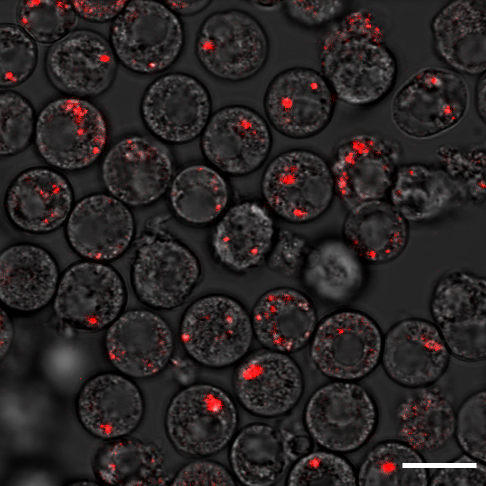The innate immune defense against Chlamydia
Chlamydia trachomatis is an obligate intracellular pathogen and is well adapted to survive, replicate and transform within the host cell cytosol. However, in order to multiply and successfully infect the host, the bacteria must leave their protected environment. During residence in the extracellular space or in dying host cells Chlamydia are unprotected from attack by innate immune cells such as neutrophils. Neutrophils have been shown to migrate to the mucosal site during Chlamydia infection. Chlamydia evolved strategies to paralyze neutrophils and thus overcome this immune defense [1].
Our research goal is to shed light on the interaction of Chlamydia with human neutrophils. Neutrophils can employ several strategies, such as phagocytosis, formation of neutrophil extracellular traps (NETs) and degranulation, to combat bacterial infection. We have previously shown that the chlamydial protease-like activity factor CPAF prevents NETosis, a neutrophil-specific cell death with release of NETs [1]. We are investigating how CPAF prevents neutrophil activation and the release of NETs. We also aim to understand, how Chlamydia can survive phagocytosis by neutrophils by employing animal models and complex human 3D tissue models combining epithelial- and endothelial layers.
[1] Rajeeve K, Das S, Prusty BK, Rudel T. Chlamydia trachomatis paralyses neutrophils to evade the host innate immune response. Nat Microbiol. 2018;3(7):824-35. Epub 2018/06/28. doi: 10.1038/s41564-018-0182-y. PubMed PMID: 29946164.
This project is funded by the European Research Council (834534-NCI CAD-ERC-2018-ADG).








